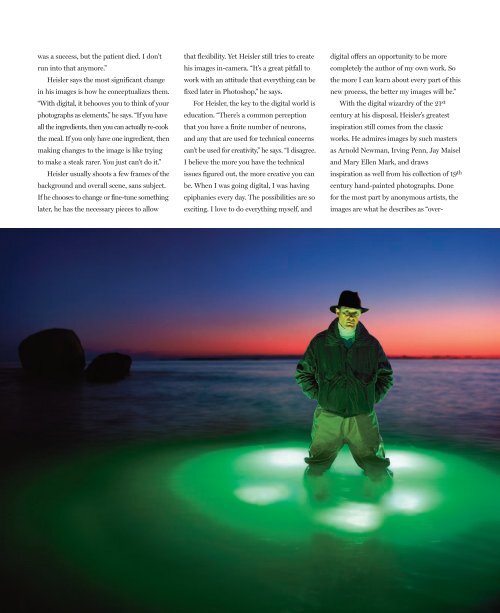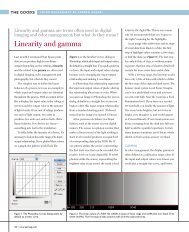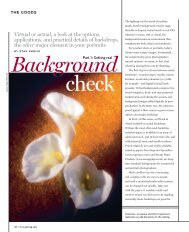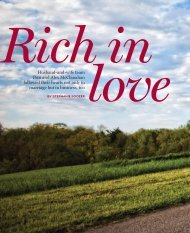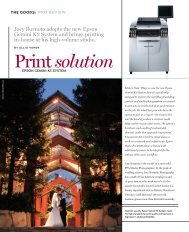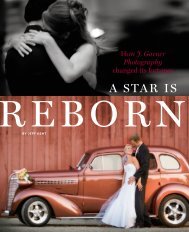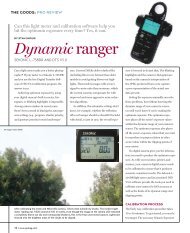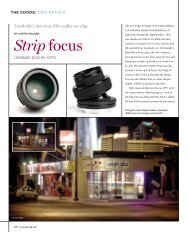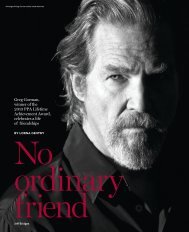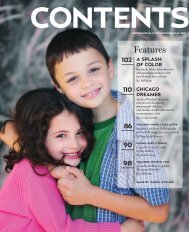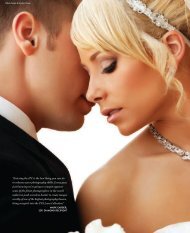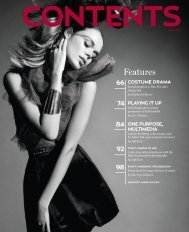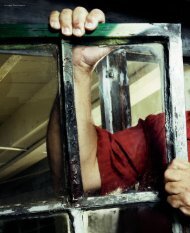january 2007 - Professional Photographer Magazine
january 2007 - Professional Photographer Magazine
january 2007 - Professional Photographer Magazine
Create successful ePaper yourself
Turn your PDF publications into a flip-book with our unique Google optimized e-Paper software.
was a success, but the patient died. I don’t<br />
run into that anymore.”<br />
Heisler says the most significant change<br />
in his images is how he conceptualizes them.<br />
“With digital, it behooves you to think of your<br />
photographs as elements,” he says. “If you have<br />
all the ingredients, then you can actually re-cook<br />
the meal. If you only have one ingredient, then<br />
making changes to the image is like trying<br />
to make a steak rarer. You just can’t do it.”<br />
Heisler usually shoots a few frames of the<br />
background and overall scene, sans subject.<br />
If he chooses to change or fine-tune something<br />
later, he has the necessary pieces to allow<br />
that flexibility. Yet Heisler still tries to create<br />
his images in-camera. “It’s a great pitfall to<br />
work with an attitude that everything can be<br />
fixed later in Photoshop,” he says.<br />
For Heisler, the key to the digital world is<br />
education. “There’s a common perception<br />
that you have a finite number of neurons,<br />
and any that are used for technical concerns<br />
can’t be used for creativity,” he says. “I disagree.<br />
I believe the more you have the technical<br />
issues figured out, the more creative you can<br />
be. When I was going digital, I was having<br />
epiphanies every day. The possibilities are so<br />
exciting. I love to do everything myself, and<br />
digital offers an opportunity to be more<br />
completely the author of my own work. So<br />
the more I can learn about every part of this<br />
new process, the better my images will be.”<br />
With the digital wizardry of the 21st century at his disposal, Heisler’s greatest<br />
inspiration still comes from the classic<br />
works. He admires images by such masters<br />
as Arnold Newman, Irving Penn, Jay Maisel<br />
and Mary Ellen Mark, and draws<br />
inspiration as well from his collection of 19th century hand-painted photographs. Done<br />
for the most part by anonymous artists, the<br />
images are what he describes as “over-


